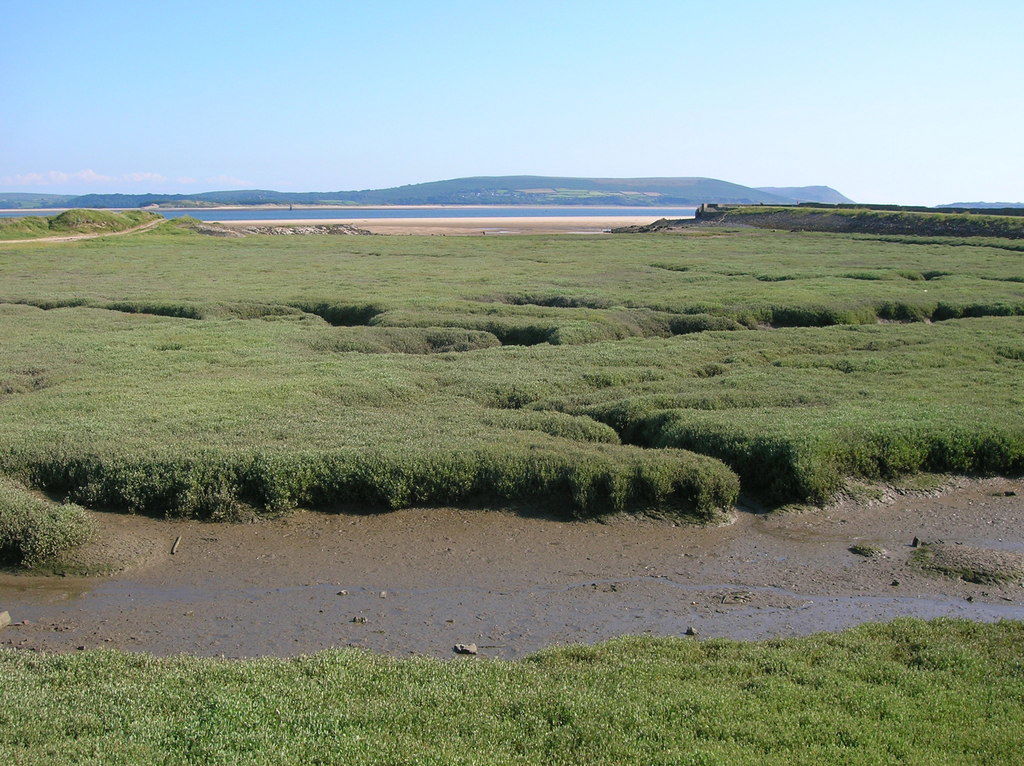Welsh Salt Marshes and Carbon Sequestration

The Welsh saltmarshes are a broad intertidal zone that punch above their weight in terms of their role in mitigating the impact of climate change. It's interesting that some landscapes which appear to be very ordinary are in fact playing a very major role in the sequestration of carbon at a time when carbon emissions are having a considerable impact on the environment.
It is estimated that the salt marshes here, effectively sequester (bury) the carbon emitted from almost 65,000 cars each year. Carbon sequestration means the removal of carbon dioxide from the atmosphere and conversion into a state where it is solid and out of the atmosphere. These places that the carbon are held, are called carbon sinks.
The salt marsh plants have air filled spaces in their roots and rhizomes which trap carbon dioxide and infuse it into the marsh itself.
The concern is that if salt marshes are disturbed, as they have been in other parts of the world, such as in California USA, vast amounts of carbon could be re-released into the atmosphere.
Some additional resources
Salt Marshes: https://www.youtube.com/watch?v=P9m7vAdqsWc
Salt Marshes as Carbon Sinks https://www.youtube.com/watch?v=leL7D5J2xk4
General principle of how trees sequester carbon, though the salt marsh does more than this:
https://www.youtube.com/watch?time_continue=114&v=D-E-7RMbSZo&feature=emb_logo
https://www.bbc.co.uk/news/uk-wales-54175790
https://royalsocietypublishing.org/doi/10.1098/rsbl.2018.0773
Beaumont N. J., Jones L., Garbutt A., Hansom J. D. & Toberman M. 2014. The value of carbon sequestration and storage in coastal habitats. Estuarine, Coastal and Shelf Science. 137: 32-40
https://journals.plos.org/plosone/article?id=10.1371/journal.pone.0069244
Dr. Annie Murphy, Postdoctoral Scientist, Northeastern University. The Influence of Nitrate on Carbon Sequestration in Salt Marsh Sediments https://www.youtube.com/watch?v=bNIo_1QDH_k
Photo credit: Salt marsh in the former Pembrey Harbour. © Copyright Simon Mortimer and licensed for reuse under this Creative Commons Licence.


